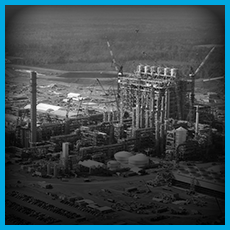OVERVIEW
Carbon capture and storage (CCS) traps carbon dioxide from fossil fuel power plants or industrial plants and then transports captured carbon dioxide by pipeline to underground storage. Recent regulatory developments have brought attention to this emerging technology. Future legal challenges notwithstanding,1 EPA’s 2013 New Source Performance Standards (NSPS)2 will encourage new coal plants to adopt CCS technology. Adopting CCS lets the U.S. continue to take advantage of its domestic coal and natural gas resources, keeps more fossil fuel power plants open, and reduces greenhouse gas emissions. But smoothing the regulatory road and making the necessary investments to get there remain major challenges.
ANALYSIS
In 2011, the U.S. had eight large power plant CCS projects in the works. Three years later, only five continue towards operation,3 due to high and rising construction costs, an unclear ability to recover operating costs, the uncertain regulatory future, and the lack of a national energy plan.4
It is more expensive both to build and operate a CCS plant than an ordinary coal power plant. The very first CCS power projects are designed for coal plants. Analysts estimate a large, new conventional coal power plant costs $ 2.2 billion,5 while an equivalent CCS coal power plant costs 60-80% more.6 In addition, because a CCS plant captures emitted CO2, it is more expensive to operate.7 CCS proponents believe exploiting potential CO2 revenue streams could reduce the added cost to 10-20% for plants that capture half of emitted CO2.8 Future experience constructing CCS plants will lower costs,9 while ongoing R&D efforts may yield cheaper carbon dioxide capture techniques.10
Enhanced oil recovery (EOR) is a mature technology that offers CCS plants an ability to recover operating costs.11 Instead of directing CO2 straight into underground storage, oil field operators buy CO2 and pump it underground into an oil field to increase production. This additional revenue stream lowers the cost gap between CCS and ordinary fossil fuel power. However, 80% of EOR CO2 currently comes mined from natural sources.12 In addition, the market value of mined CO2 is currently far lower than the cost for a power plant to capture CO2. Nevertheless, there is proven potential both to store large amounts of carbon emissions and recover a significant amount of oil with the captured carbon.
The EOR industry has injected CO2 into oil wells for decades using a Safe Drinking Water Act permitting program.13 Now, federal and state governments are beginning to set up legal frameworks specific to carbon storage, but unresolved issues remain.14 Although new permitting processes commonly experience delays, the operator of the first project to file under the new CO2-specific rule is still waiting for an injection permit, more than 30 months after applying.15 Moreover, federal rules assign indefinite liability for eventual CO2 leakage to the project operator.16 Because companies may not exist for hundreds of years, this will be impractical in the long term.
Moreover, because most plants are not and would not be built on or near underground storage facilities, they would need a build-out of CO2 pipeline transportation networks. The U.S. has 4,000 miles of CO2 pipelines, built to carry mined CO2 to oil fields for EOR. These run mainly from the Rockies to Texas, as well as from Mississippi to Louisiana.17 Whether destined for storage alone or EOR operations, sequestered CO2 emissions from other regions will require hundreds, if not thousands, of miles of new pipelines, at significant cost.
IMPLEMENTATION
To continue developing CCS, the U.S. should focus on policies that enhance economic incentives to invest in capturing, using, and storing carbon dioxide.






